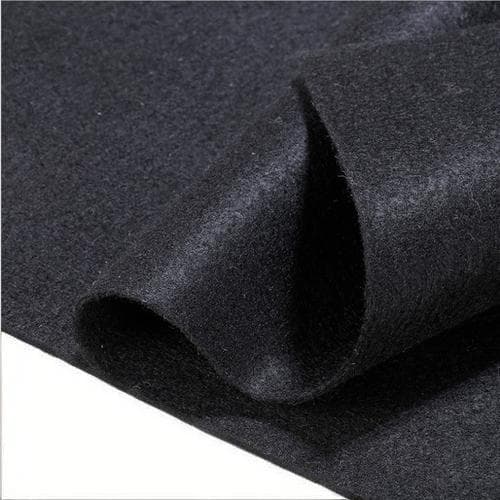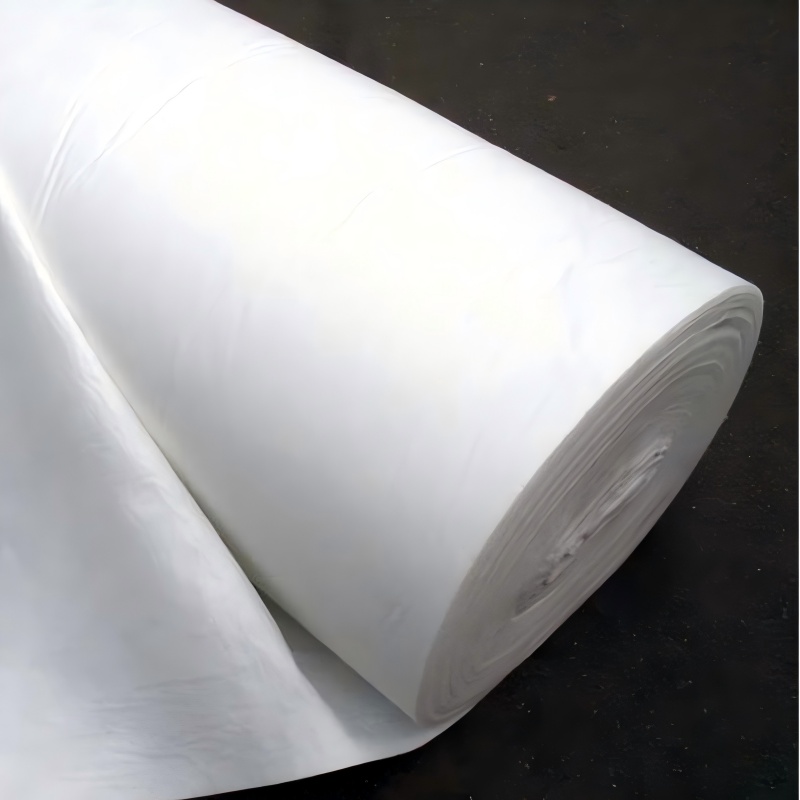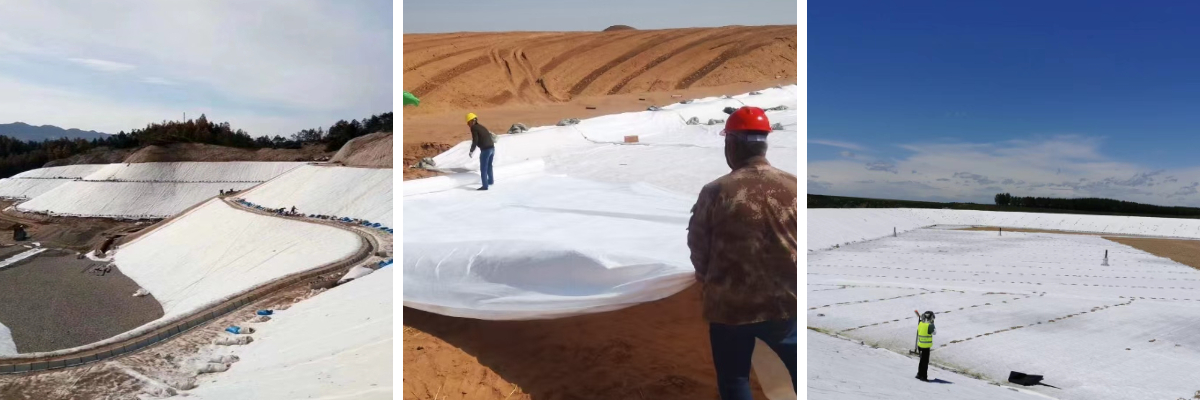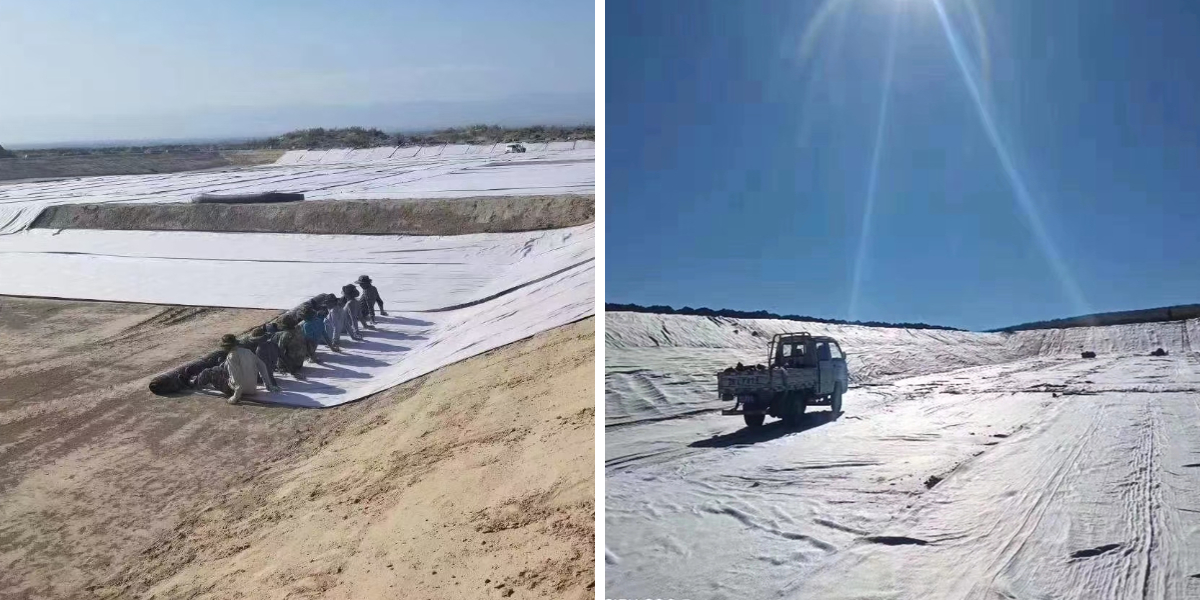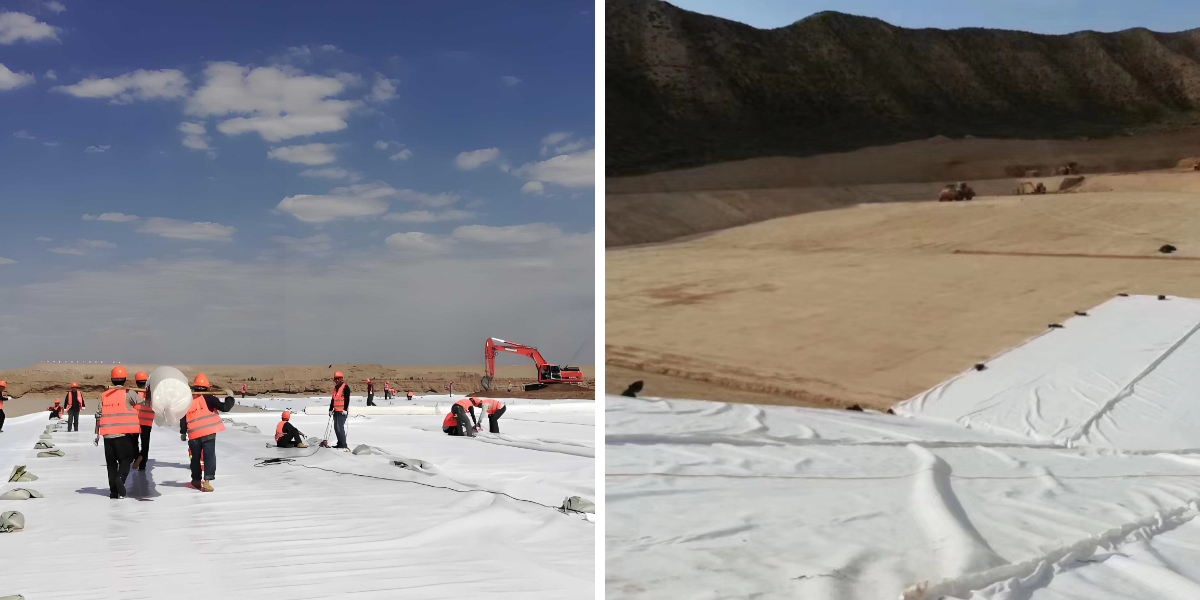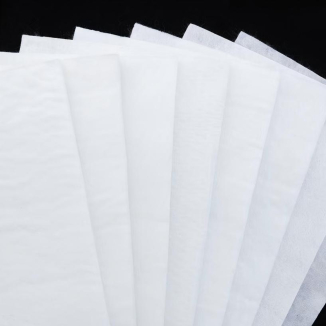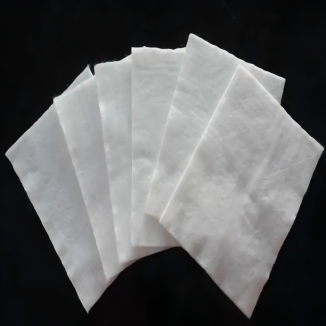Geo Fabric for Retaining Walls
1. Enhance stability: Geo Fabric can disperse the soil pressure borne by the wall, reduce the risk of settlement, and make the retaining wall more stable.
2. Soil erosion prevention: Its tight structure can prevent fine soil particles from being washed away by water, protecting the wall foundation from erosion.
3. Good permeability: allowing water to penetrate and be discharged, avoiding the accumulation of water and increasing the burden on the wall, extending its service life.
4. Convenient construction: Lightweight texture, simple laying, can accelerate construction progress and reduce installation difficulty.
5. Good economy: Strong durability, reduced maintenance costs in the later stage, and higher cost-effectiveness for long-term use.
Products Introduction:
Geo Fabric for Retaining Walls is a specialized synthetic material designed to enhance the performance and longevity of retaining wall structures. Made from high-quality polypropylene or polyester fibers, it features a porous, woven or non-woven structure that combines strength with permeability. This innovative material acts as a critical barrier and reinforcement component, working in tandem with other retaining wall elements to address key challenges like soil erosion, pressure distribution, and drainage. Whether used in residential, commercial, or civil engineering projects, it provides essential support to ensure retaining walls remain stable and functional over time.
Product Features:
1.High Tensile Strength: The fabric is engineered to withstand significant pulling forces, enabling it to effectively distribute soil pressure across the retaining wall. This strength prevents the wall from shifting or collapsing under heavy loads, even in areas with loose or unstable soil.
2.Excellent Permeability: Its porous design allows water to pass through freely, preventing the buildup of hydrostatic pressure behind the wall. By facilitating proper drainage, it reduces the risk of water-related damage, such as cracks or bulging caused by trapped moisture.
3.Soil Separation Capability: It acts as a barrier between different soil layers, preventing the mixing of fine-grained and coarse-grained soils. This separation maintains the integrity of the backfill material, ensuring optimal drainage and reducing the likelihood of soil erosion.
4.Resistance to Environmental Factors: The material is resistant to UV radiation, chemicals, and biological degradation, making it suitable for long-term use in various outdoor environments. It can withstand exposure to harsh weather conditions, including extreme temperatures and heavy rainfall, without losing its structural properties.
5.Easy Installation: Lightweight and flexible, Geo Fabric for Retaining Walls is simple to handle and 铺设 (install). It can be cut to fit the specific dimensions of the retaining wall project, minimizing waste and reducing installation time and labor costs.
Product Parameters:
project | metric | ||||||||||
Nominal strength/(kN/m) | |||||||||||
6 | 9 | 12 | 18 | 24 | 30 | 36 | 48 | 54 | |||
1 | Longitudinal and transverse tensile strength / (kN/m) ≥ | 6 | 9 | 12 | 18 | 24 | 30 | 36 | 48 | 54 | |
2 | Maximum elongation at maximum load in longitudinal and transverse directions/% | 30~80 | |||||||||
3 | CBR top penetration strength /kN ≥ | 0.9 | 1.6 | 1.9 | 2.9 | 3.9 | 5.3 | 6.4 | 7.9 | 8.5 | |
4 | Longitudinal and transverse tearing strength /kN | 0.15 | 0.22 | 0.29 | 0.43 | 0.57 | 0.71 | 0.83 | 1.1 | 1.25 | |
5 | Equivalent aperture O.90(O95)/mm | 0.05~0.30 | |||||||||
6 | Vertical permeability coefficient/(cm/s) | K× (10-¹~10-), where K=1.0~9.9 | |||||||||
7 | Width deviation rate /% ≥ | -0.5 | |||||||||
8 | Unit area mass deviation rate /% ≥ | -5 | |||||||||
9 | Thickness deviation rate /% ≥ | -10 | |||||||||
10 | Thickness coefficient of variation (CV)/% ≤ | 10 | |||||||||
11 | Dynamic perforation | Puncture hole diameter/mm ≤ | 37 | 33 | 27 | 20 | 17 | 14 | 11 | 9 | 7 |
12 | Longitudinal and transverse fracture strength (grab method)/kN ≥ | 0.3 | 0.5 | 0.7 | 1.1 | 1.4 | 1.9 | 2.4 | 3 | 3.5 | |
13 | Ultraviolet resistance (Xenon arc lamp method) | Longitudinal and transverse strength retention rate% ≥ | 70 | ||||||||
14 | Ultraviolet resistance (fluorescence UV lamp method) | Longitudinal and transverse strength retention rate% ≥ | 80 | ||||||||
Product Applications:
1.Residential Retaining Walls: Ideal for use in home gardens, landscaping projects, and sloped yards. It helps stabilize retaining walls built to prevent soil erosion, create level spaces, or enhance the aesthetic appeal of outdoor areas.
2.Commercial and Industrial Projects: Used in commercial developments, such as shopping centers, parking lots, and industrial facilities, where retaining walls are needed to manage terrain and support structures. It ensures these walls can withstand heavy traffic and large soil loads.
3.Civil Engineering Works: Essential in road construction, highway embankments, and railway projects. It reinforces retaining walls along roadways and railways, preventing soil movement that could compromise the safety and functionality of these infrastructure elements.
4.Coastal and Waterfront Structures: Suitable for retaining walls in coastal areas, lakesides, or riverbanks. Its permeability and resistance to water and salt ensure it can withstand the harsh conditions of these environments, protecting against erosion and wall failure.
Geo Fabric for Retaining Walls is a vital component in modern retaining wall construction, offering a range of benefits that enhance stability, durability, and performance. Its high tensile strength, permeability, soil separation capability, and resistance to environmental factors make it a reliable choice for various applications, from residential landscaping to large-scale civil engineering projects. Easy to install and cost-effective, it provides long-term support by addressing key challenges like soil erosion, pressure buildup, and drainage issues. By incorporating Geo Fabric for Retaining Walls into construction plans, engineers, contractors, and homeowners can ensure their retaining walls remain strong, functional, and visually appealing for years to come.



